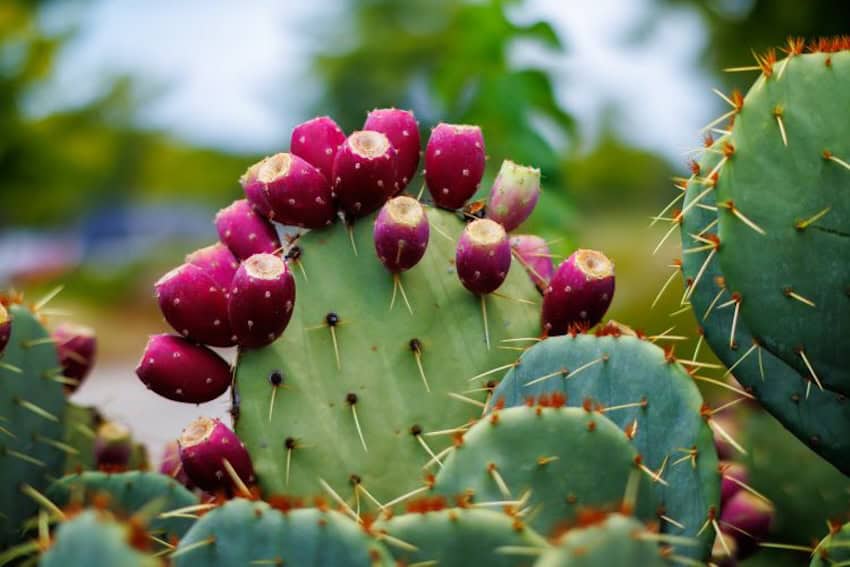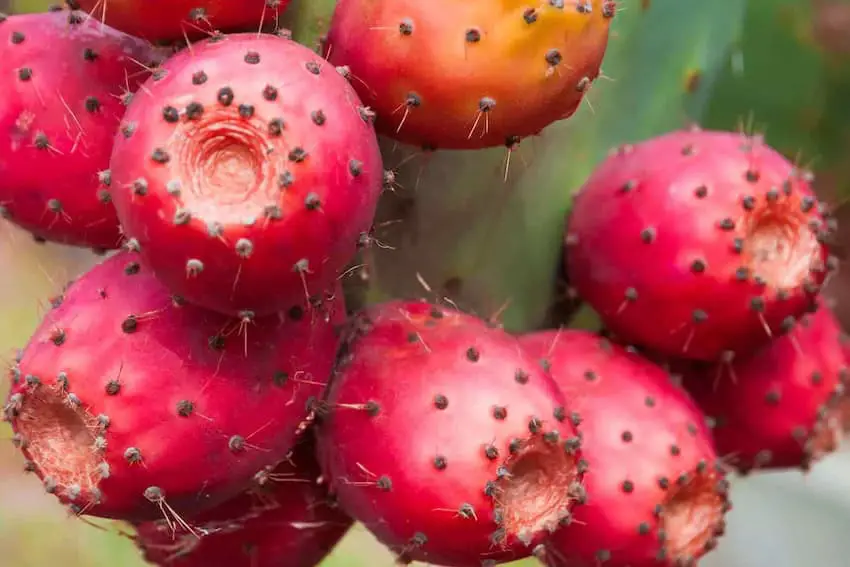Taste of Mexico: Tuna Fruit

I often think about those first human beings who dared to try different fruits. I get caught by questions like, “How hungry do you have to be to risk your life, or at least your hand, to grab a fruit surrounded by thorns, like a nopal or a tuna? Were they just reckless? Was grabbing these with your bare hand an initiation rite to be accepted among the Aztecs?” These questions keep me up at night.
What is a tuna fruit?

We are not talking about the fish, in case you’re confused. For us Mexicans, tuna or prickly pear is a native round fruit that grows on top of the nopal cactus. There are six types of prickly pears, and you can differentiate them by color: red, yellow, white, green, orange, and purple. I’m focusing on the red one because it is a common variety, and the flavor is extraordinarily nice to the taste buds.
What does red tuna taste like?
I might be romanticizing its flavor, but I’ll do my best to be objective. First, you get a sweet taste, almost like berries. Then there’s a tangy note, and finally a fresh burst similar to watermelon. It’s like eating a bolero melody, honestly. If you are worried about the texture, it resembles a kiwi or a pear with seeds.
How to eat a tuna fruit?
Think of it like any other fruit, and have fun with it. Here are some ideas to get you started:
- Cut off the ends of the prickly pear, peel off the skin, and enjoy it.
- Make juice! To start your journey with this fruit, mix the red tuna juice with orange juice.
- Freeze it and use it in a smoothie. Red prickly pear and mango smoothie is a must-try.
- Passionate about salads? Add red tuna cubes to kale, cucumber, avocado, coriander, lime juice, and olive oil. You won’t regret it!
- Are you “fit” during the weekdays like me? Quinoa bowl with red prickly pear and feta cheese.
- Sweet tooth? Greek yogurt with honey, and red prickly pear. The color that the yogurt takes on with the prickly pear is exceptionally Instagrammable if you’re feeling like an influencer.
The best season to eat tuna fruit
They are available all year, but the best season goes from July to September.
Fun facts about tuna fruit


During pre-Hispanic times, it was a predominant and valued fruit, especially for people living in arid areas since it provided them with the nutrients and water they needed to survive. For this reason, it was also a symbol of fertility.
Tuna is the Spanish-derived word of the Nahuatl word “Tonalli”. It was used to refer to the concepts of time ,and the nature cycles, but also to point out the close relationship between the environment and the well-being of a person. It is believed that the meaning of the word “tonali” applied to the fruit was then the description of something that allowed human survival in the cycles of nature.
It has scientifically proven health benefits, like reducing the risk of developing chronic diseases when eaten regularly.
Finally, while eating your prickly pear, play the song “Me he de comer esa tuna” by Jorge Negrete, the OG charro. The song talks about how stubborn we Mexicans are: “I have to eat that prickly pear even if it pricks my hand”, says the song.
María Melénedez is a Mexico City food blogger and influencer.
Source: Mexico News Daily

